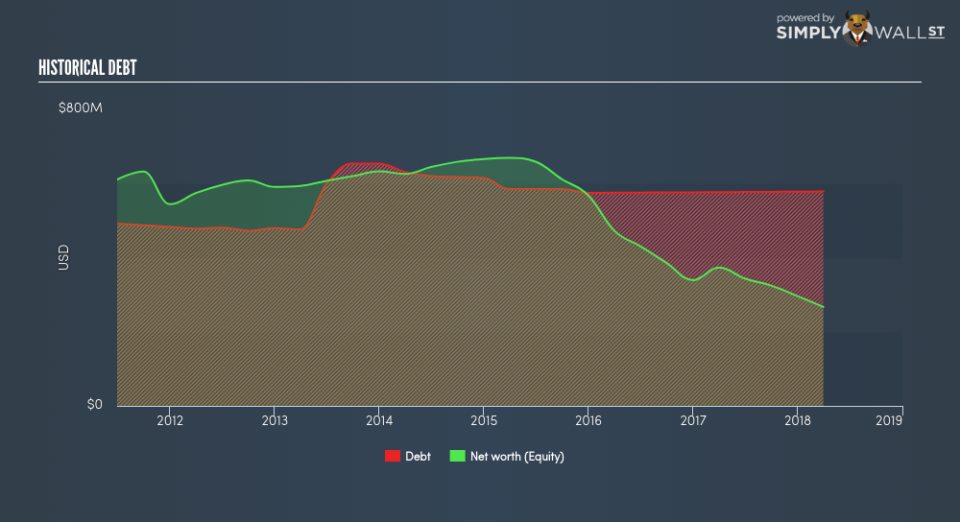Parker Drilling Company (NYSE:PKD): Time For A Financial Health Check

Parker Drilling Company (NYSE:PKD) is a small-cap stock with a market capitalization of US$46.71m. While investors primarily focus on the growth potential and competitive landscape of the small-cap companies, they end up ignoring a key aspect, which could be the biggest threat to its existence: its financial health. Why is it important? Companies operating in the Energy Services industry, especially ones that are currently loss-making, are inclined towards being higher risk. Evaluating financial health as part of your investment thesis is crucial. I believe these basic checks tell most of the story you need to know. However, I know these factors are very high-level, so I suggest you dig deeper yourself into PKD here.
How much cash does PKD generate through its operations?
Over the past year, PKD has maintained its debt levels at around US$577.97m comprising of short- and long-term debt. At this stable level of debt, the current cash and short-term investment levels stands at US$141.55m for investing into the business. On top of this, PKD has produced US$6.73m in operating cash flow in the last twelve months, leading to an operating cash to total debt ratio of 1.16%, indicating that PKD’s operating cash is not sufficient to cover its debt. This ratio can also be interpreted as a measure of efficiency for unprofitable businesses since metrics such as return on asset (ROA) requires a positive net income. In PKD’s case, it is able to generate 0.012x cash from its debt capital.
Can PKD pay its short-term liabilities?
With current liabilities at US$103.68m, it appears that the company has been able to meet these commitments with a current assets level of US$317.84m, leading to a 3.07x current account ratio. Though, anything about 3x may be excessive, since PKD may be leaving too much capital in low-earning investments.
Does PKD face the risk of succumbing to its debt-load?
Since total debt levels have outpaced equities, PKD is a highly leveraged company. This is not uncommon for a small-cap company given that debt tends to be lower-cost and at times, more accessible. Though, since PKD is presently unprofitable, sustainability of its current state of operations becomes a concern. Running high debt, while not yet making money, can be risky in unexpected downturns as liquidity may dry up, making it hard to operate.
Next Steps:
PKD’s debt and cash flow levels indicate room for improvement. Its cash flow coverage of less than a quarter of debt means that operating efficiency could be an issue. Though, the company exhibits proper management of current assets and upcoming liabilities. I admit this is a fairly basic analysis for PKD’s financial health. Other important fundamentals need to be considered alongside. You should continue to research Parker Drilling to get a better picture of the stock by looking at:
Future Outlook: What are well-informed industry analysts predicting for PKD’s future growth? Take a look at our free research report of analyst consensus for PKD’s outlook.
Valuation: What is PKD worth today? Is the stock undervalued, even when its growth outlook is factored into its intrinsic value? The intrinsic value infographic in our free research report helps visualize whether PKD is currently mispriced by the market.
Other High-Performing Stocks: Are there other stocks that provide better prospects with proven track records? Explore our free list of these great stocks here.
To help readers see pass the short term volatility of the financial market, we aim to bring you a long-term focused research analysis purely driven by fundamental data. Note that our analysis does not factor in the latest price sensitive company announcements.
The author is an independent contributor and at the time of publication had no position in the stocks mentioned.

 Yahoo Finance
Yahoo Finance 
